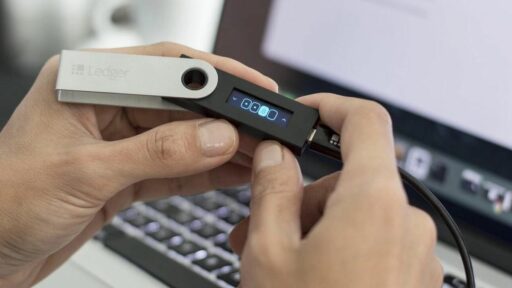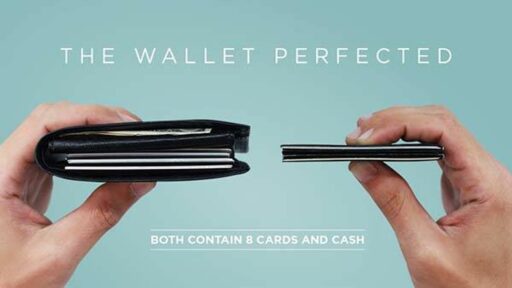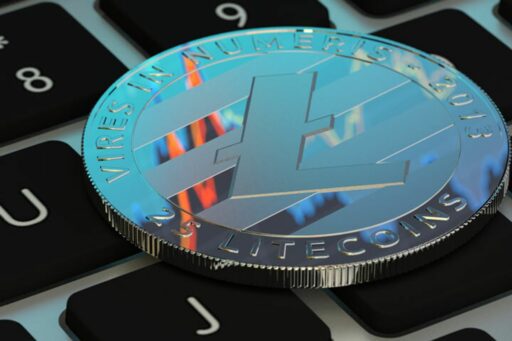Entering the world of cryptocurrency can be an exciting journey, and the first step on this path is setting up your crypto wallet. This guide will provide you with a comprehensive step-by-step process to establish your first wallet, ensuring you’re well-prepared to manage and use your digital assets securely. With a focus on user-friendly platforms like Coinsdrom, you’ll learn how to navigate the crypto landscape, select and configure your wallet, make your first purchase, and become a confident participant in the crypto community.
Key Takeaways
- Understanding the variety of cryptocurrencies and conducting thorough market research is crucial before setting up your wallet.
- Selecting the right crypto wallet involves considering security features, ease of use, and accessibility to suit your needs.
- Properly configuring your wallet and securing your private keys and seed phrases are essential steps to protect your assets.
- Choosing a trusted cryptocurrency exchange and understanding the associated fees are key to making your first crypto purchase.
- Regularly monitoring your portfolio and staying informed on crypto updates will help you manage and use your crypto assets wisely.
Exploring the Crypto Landscape

Understanding Different Cryptocurrencies
Before you can choose a wallet, it’s essential to understand the diverse landscape of cryptocurrencies. Each cryptocurrency operates on its own underlying technology and offers different features and potential for growth. Here’s a brief overview to get you started:
- Bitcoin (BTC): The original cryptocurrency, known for its wide acceptance and security.
- Ethereum (ETH): Not just a currency but also a platform for decentralized apps.
- Ripple (XRP): Focused on fast and efficient cross-border payments.
- Litecoin (LTC): Designed to be a lighter and faster alternative to Bitcoin.
- Altcoins: A collective term for all other cryptocurrencies, many of which offer unique use cases.
Diversification is key in the crypto world. Don’t put all your eggs in one basket; instead, explore various coins to understand their unique propositions and how they fit into your investment strategy.
Remember, cryptocurrencies are more than just digital money; they represent different philosophies and technologies in the financial world. As you explore, consider not only the potential returns but also the risks involved with each coin. Secure your investments by understanding the market and choosing a wallet that aligns with your needs.
Assessing Risk and Potential
When venturing into the world of cryptocurrencies, it’s crucial to assess the risks and potential rewards. Cryptocurrency investments are known for their volatility, which can lead to significant gains or losses. Before setting up your crypto wallet, consider the following points:
- The possibility of complete capital loss should not be underestimated. Cryptocurrencies can be highly unpredictable, and their value can fluctuate dramatically.
- Understanding the market trends and the factors that influence price movements is essential for making informed decisions.
- It’s advisable to consult with financial professionals before making any investment to gauge the level of risk you’re comfortable with.
Remember, the key to managing risk in cryptocurrency is to never invest more than you can afford to lose. Diversification of your investments can also help mitigate risk.
Finally, while the potential for high returns exists, entering the cryptocurrency market requires a willingness to learn and adapt to its complexities. By doing your due diligence, such as competitor analysis and understanding essential features, you can better navigate this dynamic landscape.
Resources for Crypto Market Research
Embarking on your crypto journey requires a solid foundation of market knowledge. CoinGecko is a remarkable tool that provides extensive data on digital currencies, helping you to understand the market dynamics. It’s essential to stay updated with the latest trends and news, and resources like Cryptonews.com are invaluable for this purpose. They offer a plethora of information, from breaking news and expert opinions to educational resources and market insights.
When it comes to research, consistency and quality of information are key. CryptoNews Editorial Team is known for maintaining these standards, ensuring that the content you consume is reliable and well-researched. Additionally, exploring the variety of cryptocurrencies, including altcoins with promising growth potential, is a crucial step in your research process.
Remember, the crypto market is volatile and investing carries risks. Always conduct thorough research before making any investment, and be prepared for the possibility of losses.
For a structured approach to your research, consider the following resources:
- Educational videos on Ethereum, DeFi, Altcoins, and more
- Guides on Cryptocurrency, Gambling, Tech, NFTs
- Tools like Crypto Converter, Price Tracker, Market Cap, Price Predictions
- Recommendations for the best crypto to buy, presales, ICOs, and upcoming launches
Selecting Your First Crypto Wallet

Types of Crypto Wallets
When venturing into the world of cryptocurrencies, one of the first and most crucial decisions you’ll make is selecting the right type of wallet to store your digital assets. Wallets vary greatly in terms of security, accessibility, and functionality.
There are two primary categories of crypto wallets:
- Hot Wallets: These are digital wallets that require an internet connection to operate. They include web wallets, desktop wallets, and mobile wallets. Hot wallets are known for their convenience and ease of access.
- Cold Wallets: These wallets do not require an internet connection and are considered more secure. Examples include hardware wallets and paper wallets. Cold wallets are best for long-term storage of cryptocurrencies.
Each type of wallet comes with its own set of trade-offs between security and convenience. It’s essential to evaluate your needs and choose a wallet that offers the right balance for you.
In addition to hot and cold wallets, there are also wallets that support multiple cryptocurrencies, allowing you to manage a diverse portfolio from a single interface. This feature is particularly useful for those looking to trade or invest in a variety of digital currencies.
Features to Look for in a Wallet
When selecting your first crypto wallet, it’s important to focus on features that align with your security needs and usage habits. Security is the cornerstone of any reliable wallet, with options like two-factor authentication, multi-signature support, and a choice between hot (online) and cold (offline) storage. An intuitive user interface ensures that you can manage your assets without unnecessary complexity.
- Security: Look for two-factor authentication, multi-signature support, and storage type.
- Ease of Use: The wallet should have a straightforward interface.
- Backup & Recovery: Options for secure backup and easy recovery of your wallet.
- Compatibility: Ensure the wallet supports the cryptocurrencies you’re interested in.
- Customer Support: Access to responsive and helpful customer service.
Remember, the best wallet for you is one that balances security with ease of use, while also providing robust backup and recovery options. It’s not just about having a plethora of features, but about having the right features that meet your specific needs.
Recommended Wallet Providers
After exploring the types of wallets and the features they offer, it’s time to consider specific wallet providers. Choosing the right provider is crucial for the security and accessibility of your crypto assets. Below is a list of some of the most reputable wallet providers, each with its own set of features catering to different needs:
- MetaMask: A popular browser extension and mobile app that provides an easy-to-use interface for Ethereum and ERC-20 tokens.
- Trezor: Known for its robust security measures, Trezor offers hardware wallets that store your crypto offline.
- Trust Wallet: A mobile wallet app that supports a wide range of cryptocurrencies and integrates with decentralized applications.
- Keplr: A wallet that specializes in the Cosmos ecosystem, offering support for various blockchains within that network.
- Swissmoney Wallet: While not as widely known, it provides compatibility with multiple currencies, including USDT.
Remember, no single wallet can meet every possible need, but by prioritizing your requirements, you can find a wallet that aligns closely with your crypto activities. Always ensure that the wallet you choose supports the cryptocurrencies you intend to use and offers a balance between convenience and security.
Setting Up and Securing Your Wallet

Step-by-Step Wallet Configuration
Configuring your wallet is a crucial step in securing your digital assets. Follow the on-screen prompts provided by the wallet app to guide you through the setup process. Here are the general steps you should expect:
- Download and install the wallet application on your preferred device.
- Create an account with a strong, unique password.
- Write down your recovery phrase or seed phrase and store it in a secure location.
- Set up any additional security features, such as two-factor authentication.
- Finalize the setup and begin using your wallet to manage your assets.
Remember, the security of your wallet is paramount. Treat your recovery phrase with the utmost care, as it is the key to accessing your funds if you ever lose access to your wallet.
Once your wallet is configured, you can access it directly from your device, ready to embark on your crypto journey. Keep in mind that some wallets may require further steps, such as connecting to a hardware device or updating firmware. Always refer to the specific instructions provided by your wallet manufacturer.
Protecting Your Private Keys
Securing your private keys is the cornerstone of maintaining the safety of your crypto assets. Always keep your private keys offline to minimize the risk of hacking and unauthorized access. Here are some best practices to ensure your keys remain protected:
- Use a clean operating system when generating keys to reduce malware risks.
- Employ cold storage, like a hardware wallet or paper wallet, for key storage.
- Never share your mnemonic phrase; it’s the gateway to your funds.
- Regularly back up your keys in multiple secure locations.
Vigilance and adherence to security best practices are paramount. The process of securing digital assets with tools like the Exodus Crypto Wallet includes setup, security features, and privacy practices. It’s crucial to stay informed and maintain a high level of security awareness.
Remember, losing your mnemonic phrase or private key equates to losing your assets. Conversely, if someone else obtains them, they could potentially compromise your wallet. Therefore, treat your keys with the utmost care and never underestimate the importance of security.
Backup and Recovery Best Practices
Ensuring the safety and recoverability of your crypto assets is paramount. Immediate and accurate backup of your recovery phrase is essential the moment you create your wallet. This phrase is the key to restoring your wallet and funds if you ever lose access.
It is critical to maintain absolute confidentiality with your recovery phrase. Exposure could lead to unauthorized transactions and potential loss of funds.
For optimal security, adhere to the following steps:
- Note down your recovery phrase without errors and store it securely offline.
- Utilize all available security settings, such as Two-Factor Authentication (2FA) and biometric authentication.
- Regularly update your wallet’s software to benefit from the latest security features.
- Create backups frequently to ensure you have the latest access points to your account.
Remember, the responsibility of protecting your recovery phrase and backups lies with you. Avoid storing them on internet-connected devices to minimize the risk of cyber threats.
Purchasing Your First Cryptocurrency

Choosing a Cryptocurrency Exchange
After setting up your wallet, the next critical step is choosing a cryptocurrency exchange where you can buy your first digital assets. It’s essential to select an exchange that aligns with your needs and provides a secure, user-friendly experience.
When evaluating exchanges, consider the following factors:
- Security measures and history
- Supported cryptocurrencies and pairs
- Fee structure and payment options
- Customer support and user reviews
Remember, a reliable exchange is your gateway to the crypto world, so take your time to make an informed decision.
Coinsdrom is one example of an exchange that offers a user-friendly interface and competitive pricing for popular cryptocurrencies like Bitcoin and Ethereum. Before making a purchase, ensure you complete the necessary verification process and understand the payment methods available.
Understanding Exchange Fees and Limits
When engaging with cryptocurrency exchanges, it’s crucial to grasp the fee structure and transaction limits that can affect your trades. Exchange fees vary widely and can include costs such as trading fees, withdrawal fees, and deposit fees. These fees are typically a percentage of the transaction value, but some exchanges also charge flat fees.
- Trading fees are incurred when you buy or sell cryptocurrencies on an exchange. They can be reduced by increasing your trading volume or holding the exchange’s native token.
- Withdrawal fees apply when you transfer your crypto to an external wallet. These fees can differ significantly between cryptocurrencies.
- Deposit fees are less common but can be charged for depositing fiat or cryptocurrencies.
Transaction limits are another critical aspect to consider. Limits can be daily, weekly, or monthly and may depend on your account level, which is often tied to the degree of identity verification you’ve completed. Here’s a simplified example of how limits might be structured:
| Account Level | Daily Limit | Weekly Limit | Monthly Limit |
|---|---|---|---|
| Basic | $500 | $2,500 | $10,000 |
| Verified | $10,000 | $50,000 | $200,000 |
| Pro | $100,000 | $500,000 | No limit |
Always review the fee schedule and limits of an exchange before starting to trade. This will help you avoid unexpected costs and ensure that your trading activities align with your financial goals.
Making Your First Crypto Purchase
After selecting a cryptocurrency exchange and understanding the associated fees and limits, you’re ready to make your first crypto purchase. Ensure that the exchange you’ve chosen is reputable and offers the cryptocurrencies you’re interested in. Once you’ve completed the verification process, you can proceed to buy your desired crypto assets.
When making your purchase, consider the following steps:
- Log in to your exchange account.
- Navigate to the market or buy section.
- Select the cryptocurrency you wish to purchase.
- Enter the amount you want to spend or the quantity of crypto you want to buy.
- Review the transaction details carefully.
- Confirm the purchase and complete the payment.
Remember, the crypto assets will be sent directly to your specified wallet after the purchase. It’s crucial to have your wallet set up and ready to receive the funds.
By following these steps and using a trusted exchange like Coinsdrom, you can confidently embark on your exciting crypto adventure. The benefits of creating a crypto wallet include elimination of fraud risk, transaction anonymity, and security for funds.
Managing and Using Your Crypto Assets

Sending and Receiving Cryptocurrency
Successfully managing your crypto assets involves understanding how to send and receive cryptocurrency efficiently. When you’re ready to receive digital currency, you’ll typically navigate to the ‘receive’ section of your wallet application. Here, your wallet will generate a unique address, often presented as both a text string and a QR code for convenience. This address is what you’ll share with the sender or use to transfer assets from another location, such as an exchange.
To send cryptocurrency, you’ll access the ‘send’ function within your wallet app. You’ll need the recipient’s public address, which is their wallet number, to initiate the transfer. It’s crucial to double-check this address to avoid irreversible mistakes. Remember, transactions on the blockchain are permanent.
Note: Always ensure that the receiving address is correct and belongs to the intended recipient. Transferring to a wrong address could result in the permanent loss of your assets.
Here’s a simple list to keep in mind when receiving cryptocurrency:
- Verify the currency type matches your wallet’s supported assets.
- Use the ‘receive’ feature to generate your unique address.
- Share the address or QR code with the sender securely.
- Confirm the transaction once the assets arrive in your wallet.
Monitoring Your Portfolio
Keeping a vigilant eye on your crypto assets is crucial for effective portfolio management. Constant updates of the conversion rate are essential due to the volatile nature of cryptocurrencies. A well-designed crypto wallet will provide real-time information, ensuring you’re always aware of your assets’ value.
To streamline the monitoring process, consider using wallets that offer comprehensive features:
- Commission calculation to understand transaction costs transparently.
- Push notifications for immediate alerts on account activity.
- Sections like Home for balance overviews and Stake for managing rewards.
Remember, the key to successful portfolio management is staying informed and reacting promptly to market changes.
By utilizing these tools, you can maintain a clear picture of your financial standing and make informed decisions based on current market conditions. Always choose a wallet that aligns with your security and transaction needs, as highlighted in our comprehensive guide to crypto wallets.
Staying Informed on Crypto Updates
In the ever-evolving world of cryptocurrencies, staying updated with the latest news and trends is crucial. Regularly visiting reputable crypto news websites can help you maintain a pulse on market movements, upcoming regulations, and technological advancements. Cryptonews.com, for instance, maintains the consistency and quality of information, providing readers with reliable and well-researched crypto news and analysis.
To streamline your information intake, consider subscribing to newsletters that offer a quick read on daily crypto news. This ensures you receive timely updates directly in your inbox, allowing you to stay informed without spending hours searching for information. Here’s a simple list to get started:
- Sign up for daily or weekly newsletters from top crypto news sites.
- Follow key influencers and thought leaders in the crypto space on social media.
- Join online forums and discussion groups to engage with the community.
Remember, the crypto market is highly volatile and information can become outdated quickly. Make it a habit to verify the information through multiple sources before making any decisions.
Lastly, keep an eye on educational resources and market insights to not only stay informed but also enhance your understanding of the crypto landscape. Whether it’s breaking news or in-depth guides on securing digital currencies with crypto wallets, being well-informed is your best defense against market uncertainties and cyber threats.
Conclusion
Embarking on your crypto journey by setting up your first wallet is a significant milestone. Throughout this guide, we’ve walked you through the essential steps, from exploring the diverse world of cryptocurrencies to securing your digital assets in a wallet. Remember, the key to a successful crypto experience lies in choosing a wallet that aligns with your needs, prioritizing security, and staying informed. With your new wallet ready, you’re now equipped to participate in the dynamic and evolving landscape of cryptocurrency. Embrace the journey ahead with confidence and curiosity, and always keep your private keys and recovery phrases secure. Welcome to the world of digital assets!
Frequently Asked Questions
What is a cryptocurrency wallet?
A cryptocurrency wallet is a digital tool that allows you to store, send, and receive various cryptocurrencies securely. It manages your private and public keys, which are essential for executing transactions on the blockchain.
How do I choose the right type of crypto wallet for me?
Consider factors such as security, convenience, and the type of transactions you plan to execute. Hardware wallets offer high security for long-term storage, while software wallets are more convenient for frequent trading and transactions.
What are private keys, and why are they important?
Private keys are a form of cryptography that allows a user to access their cryptocurrency. They are crucial for the security of your assets and should be kept confidential and secure at all times.
How do I set up a crypto wallet?
To set up a crypto wallet, choose a reputable provider, download the software or purchase the hardware, follow the instructions to create an access code, and securely store the seed phrase provided during the setup process.
What should I look for when selecting a cryptocurrency exchange?
Look for an exchange with a good reputation, robust security measures, reasonable fees, a user-friendly interface, and a wide selection of supported cryptocurrencies. Also, consider the exchange’s customer support and regulatory compliance.
How can I keep my cryptocurrency secure after purchase?
After purchasing cryptocurrency, transfer it to your private wallet, keep your private keys and seed phrase secure, use strong and unique passwords, enable two-factor authentication, and consider using a hardware wallet for additional security.





